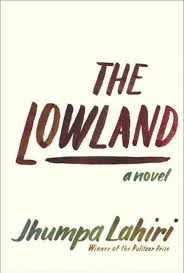I read a lot in spurts in 2015, and in the course of those spurts, read some pretty fantastic novels, short story collections, and nonfiction books. From January through mid-April, I read nothing except research for my book, mixed in with a healthy smattering of essays, articles and museum plaques. Excluding all the research material, here’s the best of what I read this year, in the first of several weekly installments:
I loved Lily King’s Euphoria, with its rich, taught recasting of Margaret Mead’s life and anthropological work in 1930s New Guinea. The novel is beautifully constructed — short and tight and suspenseful, though I had some concerns about its ending. Review here.
I usually like Jhumpa Lahiri’s short stories better than her novels; she’s a master of the shorter form. And while I’d certainly first recommend the inimitable masterwork that was Interpreter of Maladies and the impressive stories in Unaccustomed Earth (particularly the heartshattering trilogy of stories at the collection’s end), The Lowland has some nice moments. Lahiri is a masterful chronicler of the dislocations of immigrant life, finely attuned to the nuances of culture and place. This novel is more cohesive than her first, though the early chapters can feel more expository and less vivid than what follows.
I think Elizabeth Gilbert gets criticized unfairly for her nonfiction books; the tenor and tone of this criticism often seems unnecessarily harsh, and gendered in a way I cannot abide. In The Signature of All Things she returns to her original form: long before Eat, Pray, Love, Gilbert was an accomplished and respected novelist. Here she returns to the novel form with an epic story of an imagined botanist during the age of Darwin, shadowing the contours of her fictive character’s life with the restrictions and confinements particular to a woman of her time, and also with the sweeping scope of possibility created by her life in science. There is a vast, hidden history of women’s accomplishments, and Alda’s story steps into this historical void. If the novel occasionally feels uneven and a bit too long, it’s an ambitious speculative historical portrait, and a fascinating glimpse into the vast, unanswerable, “What if?”
I read this book at just the right moment. It’s (fairly) criticized, as successful books often are, but it happened to come into my life via a friend’s coffee table, and I read it in the span of one afternoon while I waited to head out to a restaurant to meet friends for dinner. It so-happened that post-research-trip, post-residency, as I settled into a 450-square-foot cottage, I needed to do some serious tidying in order to claim some space, and Kondo’s book walked into my life just when I needed it. I followed it almost exactly, refolding my shirts and socks and sending boxes down to the charity shop nearby. Here is what I will say about Marie Kondo’s method: it can be incredibly clarifying. Her guiding principle in cleaning out is to keep what sparks joy, and that what sparks joy will be different for everyone. Her method provides a helpful and reliable schema for sorting and discarding, gives permission to toss things that we otherwise keep out of sentiment or guilt, and maintains a brisk momentum that simultaneously tidies your space and provides you with a clearer sense of perspective on what your priorities and values look like. I found it at a fortuitous moment and followed it because I needed it. And because I needed it, it worked.
More books to follow next week.





Pingback: New York Reading | Starlit Nights